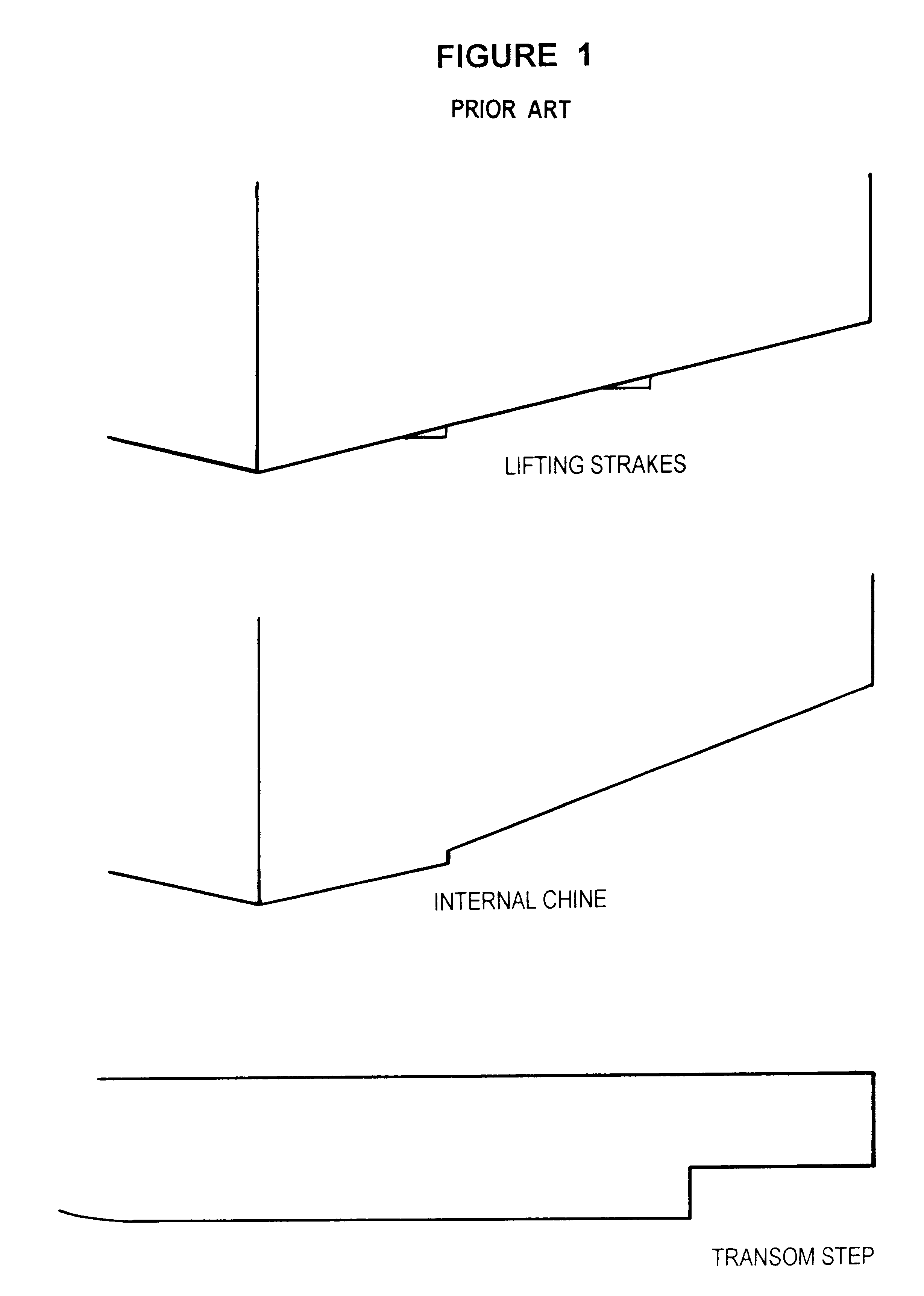Boat bottom hull design
a bottom hull and hull technology, applied in vessel construction, special-purpose vessels, transportation and packaging, etc., can solve the problems of excessive surface area and its accompanying excessive drag, ineffective use of relatively small "flow trips" and other problems, to achieve the effect of effectively exploiting the potential advantages of internal chines
- Summary
- Abstract
- Description
- Claims
- Application Information
AI Technical Summary
Benefits of technology
Problems solved by technology
Method used
Image
Examples
Embodiment Construction
As shown in FIG. 3, the exemplary boat hull design of the present invention is comprised of three essential features--a stepped inboard chine A, a concave centerline section B, and an outboard flat of the bottom C.
The stepped inboard chine A directs the water away from the hull and is considerably larger or deeper than conventional chines. The depth of the chine ensures that the outboard flat of the bottom generally remains out of the water.
The concave centerline section B directs the water both away and down from the hull, causing an upward resultant force. The arrows in FIG. 3 indicate the direction of the deflected water which is normal to the surface of the hull. The result is to increase the upward force which supports the hull. This allows the hull to be supported by an even smaller area and therefore reduces the drag, while allowing the boat to plane at slower speeds.
The outboard flat of the bottom C acts as reserve buoyancy at lower speeds and gives transverse stability in a...
PUM
 Login to View More
Login to View More Abstract
Description
Claims
Application Information
 Login to View More
Login to View More - R&D
- Intellectual Property
- Life Sciences
- Materials
- Tech Scout
- Unparalleled Data Quality
- Higher Quality Content
- 60% Fewer Hallucinations
Browse by: Latest US Patents, China's latest patents, Technical Efficacy Thesaurus, Application Domain, Technology Topic, Popular Technical Reports.
© 2025 PatSnap. All rights reserved.Legal|Privacy policy|Modern Slavery Act Transparency Statement|Sitemap|About US| Contact US: help@patsnap.com



